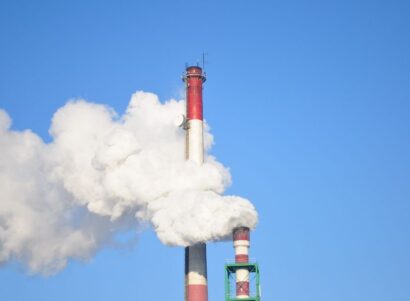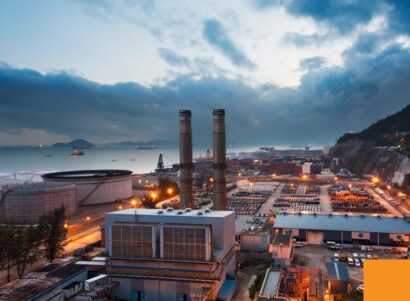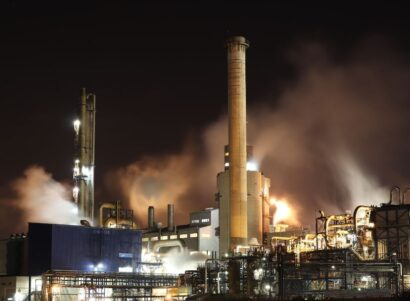Key Finding
In this paper, we examined the methane and hazardous air pollutant emissions from seven natural gas super-emitter events, finding that every event posed modeled health risks to nearby communities and that three events posed modeled safety risks to onsite workers. Our findings indicate that these events pose not only a climate risk but also a public health risk and, in some cases, a safety risk.
“There’s a lot of global attention on methane super-emitters due to methane’s global impact on climate change,” said Sofia Bisogno, BSE, air quality scientist at PSE Healthy Energy. “Our research unearths the hyperlocal health and safety risks that methane emissions events may pose to communities, the kinds of risks that aren’t typically regulated or accounted for. Our research clearly shows that methane emissions events pose health risks, which should be accounted for.”
Background
Emissions of methane from oil and gas infrastructure are a priority concern for climate mitigation due to methane’s heat-trapping power. Super-emitter events, or emissions events releasing more than 100 kilograms of methane per hour, are of particular concern due to their disproportionate climate impact. With the focus on climate, the potential safety risks from super-emitters, such as fires and explosions, are often overlooked. Additionally, few studies have assessed the health risks posed by the other hazardous gases, such as the carcinogen benzene, that are emitted alongside methane during these events.
Typically, studies have focused on the health risks of routine emissions rather than those from super-emitter events. To date, safety and health risk assessments of methane super-emitter events have been limited by the lack of air sampling measurements taken during an event, and by the lack of transparency about the chemical composition of the gas being released into the atmosphere. PSE’s recent research in gas composition, discussed in Rowland et al, helps overcome these limitations and allows us to estimate the health and safety risks from methane super-emitter events specifically.
Key Insights
We sourced methane emissions rates for seven super-emitter events from either peer-reviewed literature or Carbon Mapper, a non-profit organization that tracks methane emissions using satellites and aircrafts. We combined the methane emissions rates with the gas composition ratios and comprehensive gas composition database developed in Rowland et al, to calculate each event’s hazardous pollutant emissions.
We then used a regulatory-grade dispersion model to simulate methane emissions and hazardous air pollutant concentrations given the weather at the time of the event and the landscape near the source of the emissions. Next, we determined where the levels of methane were high enough to pose a safety risk and where the levels of hazardous air pollutants were high enough to pose a health risk to people nearby.
“Carbon Mapper’s methane observations have shown that methane super-emitters can account for 20-60% of total methane emissions in certain sectors, said Daniel Bon, Carbon Mapper Program Manager. “Combining methane data with key health-related information such as gas composition data – and attributing that to a specific source – is bringing transparency to the true impacts of these emissions. Combining these critical datasets is unearthing the health impacts that super-emitters have on communities and individuals – unlocking powerful new channels for mitigation action and protecting public health.”
Understanding Health Risks

Hazardous air pollutants associated with methane emissions–benzene, toluene, ethylbenzene, and hexane–can pose health risks to the reproductive, immune, hematologic, nervous, and respiratory systems. Long-term exposure to benzene can lead to cancer.
Our research assesses the short-term health risks because the methane emissions data we use capture a snapshot of the emissions event, which is not sufficient to model long-term risks.
Government agencies have established benchmarks to assess the public health risks of hazardous air pollutants. In this research, we assessed whether the modeled concentrations exceeded benchmarks set by California’s Office of Environmental Health Assessment and Texas’s Commission of Environmental Quality. These benchmarks are measured in parts per billion–the concentration of the pollutants in the air–and define the level below which people are not expected to suffer short-term health effects. Here, we focused on benzene because it is the most toxic pollutant associated with natural gas. Short-term risks of benzene can include dizziness, headaches, respiratory problems, and other health issues.
- For all seven cases, we found that modeled peak concentrations exceeded health benchmarks. While all cases posed modeled health risks within one kilometer of the source, some events emitted enough hazardous pollutants to pose modeled health risks as far as 19 km (nearly 12 miles) from the source, potentially putting residential neighborhoods, schools, and daycares at risk.
- These exceedances were not a one-time incident; instead, they frequently occurred over the duration of the methane emissions event, especially within ~300 m of the source. This suggests that co-emitted hazardous pollutants from methane emissions events may pose a persistent health risk for oil and gas workers, fenceline communities, and even more distant surrounding communities if the emissions are not quickly mitigated.
- Surprisingly, we found that smaller super-emitter events can pose outsized health risks due to relatively higher levels of co-emitted hazardous pollutants. For example, the second-lowest methane emissions event yielded the highest benzene air concentration, the farthest benzene health risk exceedance distance for the OEHHA benchmark, and the most frequent health benchmark exceedances between one and five kilometers from the source. This is often due to the gas composition, which changes depending on the equipment containing it. Certain equipment, such as storage tanks, emit flash gas, a kind of gas that contains much higher concentrations of hazardous air pollutants. This means that relatively smaller upstream methane emissions events can be dangerous for health, depending on the equipment they originate from.
Understanding Safety Risks
While hazardous air pollutants co-emitted alongside methane can pose a public health risk, methane itself is highly flammable and therefore presents a safety risk in high concentrations. In this research, we utilized the National Institute of Occupational Safety and Health’s “Immediately Dangerous to Life or Health” benchmark, which assesses the risk of fire, explosion, or asphyxiation and is used to assess worker safety.
- For the three largest case studies, we found that modeled levels of methane were high enough to pose fire or explosion risks up to 90 meters away from the source of the methane emissions.
- For the largest case study, which emitted over 15,000 kilograms of methane per hour, we found that modeled levels of methane exceeded the safety benchmark up to 270 meters from the source, potentially impacting on-site workers.
The Communities at Risk
Because our air modeling yielded a geographical risk area from each event, we were able to incorporate demographic data to learn about the affected communities.
- In three of the seven case studies, the areas experiencing levels of benzene that could pose a risk to health were home to high environmental justice communities–neighborhoods disproportionately saddled with environmental burdens, social vulnerabilities, and health vulnerabilities compared to other census tracts in their state.
- In two of the seven case studies, we found sensitive facilities such as daycares and schools within the modeled health risk areas.
“This study connects super-emitter events to everyday life,” said Dr. Nick Heath, PhD, Air Quality Modeling Scientist at PSE Healthy Energy. “Focusing on the immediate air quality and health risks of super-emitters helps people grasp the need for better monitoring and mitigation approaches.”
Conclusions
Methane emissions events pose more than just climate risks; they may also degrade local air quality and pose public health risks. The prevention and mitigation of methane emissions events from oil and gas production has safety and health benefits in addition to reducing heat-trapping methane emissions.
Policies and early detection efforts that control methane super-emitters should consider factors beyond methane emissions rates, such as gas composition and proximity to people, to provide the strongest co-benefits for public health and safety. Our findings also align with other recent scientific assessments that recommend a setback distance of at least one kilometer for wells and production facilities to better protect the health of frontline communities.
***
This paper is foundational to PSE Healthy Energy’s Methane Risk Map, an interactive digital tool coming in summer 2025. The Methane Risk Map integrates satellite methane data with our extensive gas composition research, regulatory-grade dispersion modeling, and demographic information to create the clearest picture yet of the human health risks of methane-linked pollutants.
This research is part of PSE Healthy Energy’s Methane + Health Initiative, a multi-year research initiative to improve the scientific and public understanding of the link between methane emissions, air pollution, and public health.

 The Safety and Health Risks of Methane Super-Emitter Events
The Safety and Health Risks of Methane Super-Emitter Events






